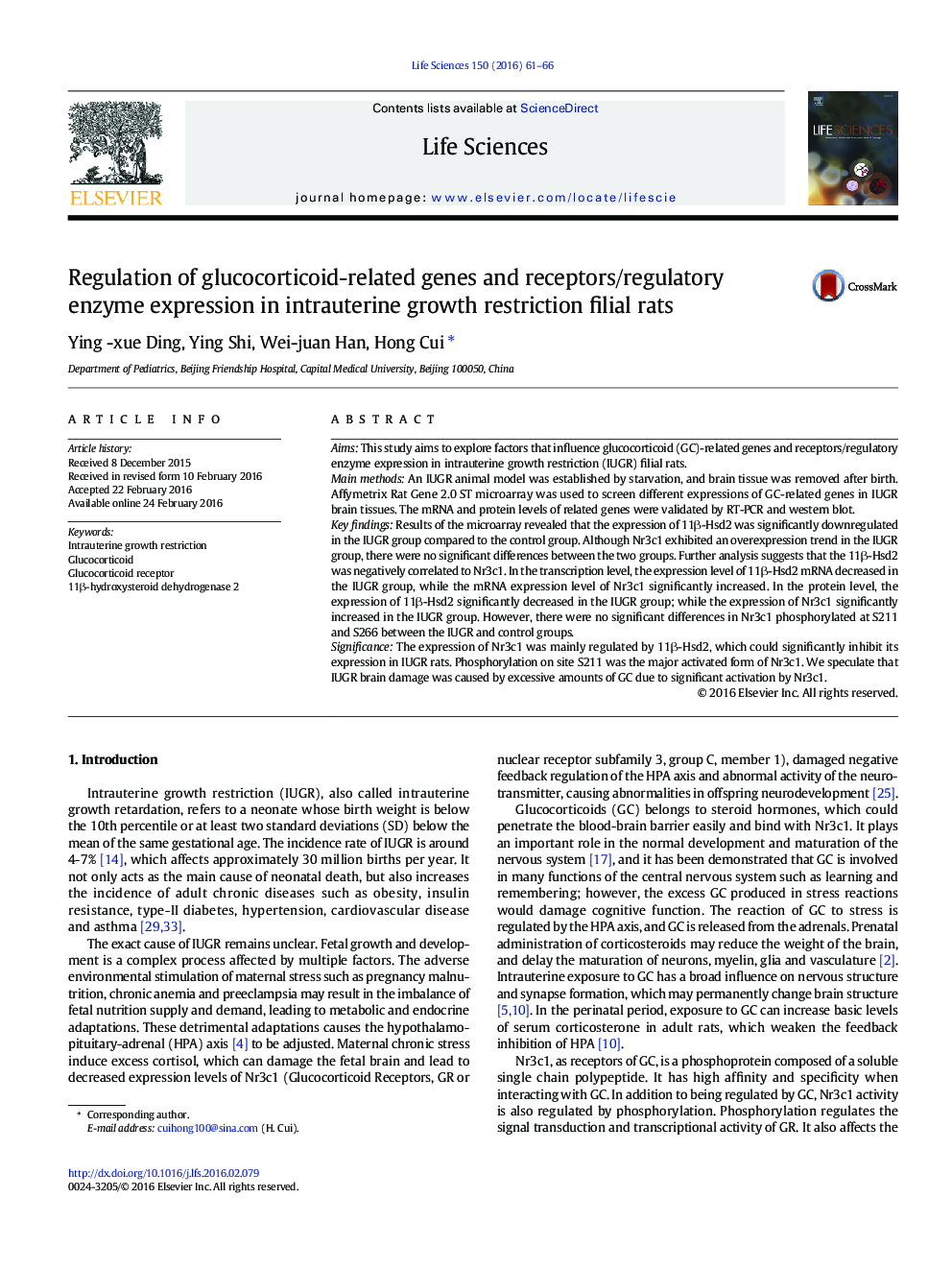| Article ID | Journal | Published Year | Pages | File Type |
|---|---|---|---|---|
| 2550474 | Life Sciences | 2016 | 6 Pages |
AimsThis study aims to explore factors that influence glucocorticoid (GC)-related genes and receptors/regulatory enzyme expression in intrauterine growth restriction (IUGR) filial rats.Main methodsAn IUGR animal model was established by starvation, and brain tissue was removed after birth. Affymetrix Rat Gene 2.0 ST microarray was used to screen different expressions of GC-related genes in IUGR brain tissues. The mRNA and protein levels of related genes were validated by RT-PCR and western blot.Key findingsResults of the microarray revealed that the expression of 11β-Hsd2 was significantly downregulated in the IUGR group compared to the control group. Although Nr3c1 exhibited an overexpression trend in the IUGR group, there were no significant differences between the two groups. Further analysis suggests that the 11β-Hsd2 was negatively correlated to Nr3c1. In the transcription level, the expression level of 11β-Hsd2 mRNA decreased in the IUGR group, while the mRNA expression level of Nr3c1 significantly increased. In the protein level, the expression of 11β-Hsd2 significantly decreased in the IUGR group; while the expression of Nr3c1 significantly increased in the IUGR group. However, there were no significant differences in Nr3c1 phosphorylated at S211 and S266 between the IUGR and control groups.SignificanceThe expression of Nr3c1 was mainly regulated by 11β-Hsd2, which could significantly inhibit its expression in IUGR rats. Phosphorylation on site S211 was the major activated form of Nr3c1. We speculate that IUGR brain damage was caused by excessive amounts of GC due to significant activation by Nr3c1.
